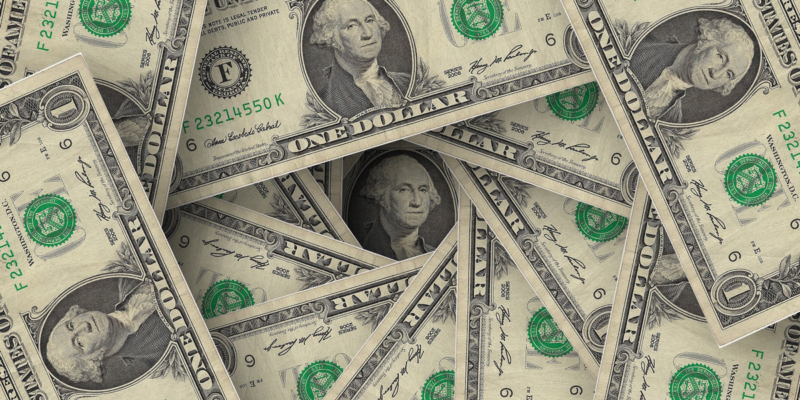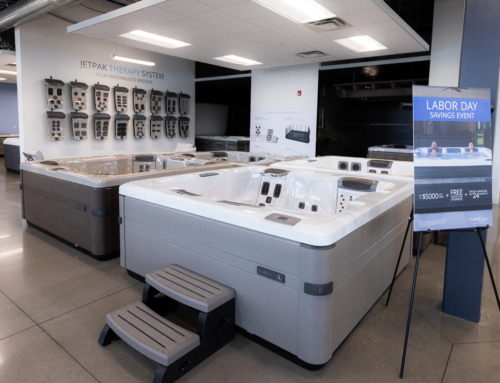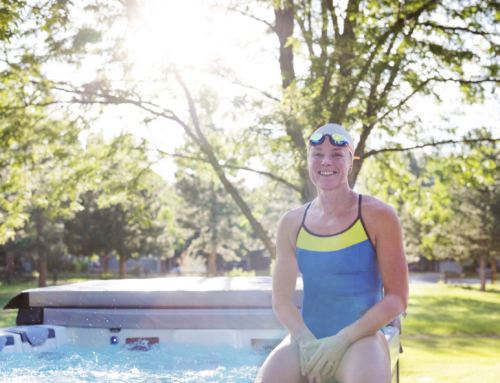Cash flow refers to the steady stream of money coming into and out of a business. Ideally, you want to have a positive cash flow, which simply means that more money is coming into your business than is going out of it.
This cash inflow is the lifeblood of any business. Without a steady influx of cold-hard cash, you may discover that you have a hard time paying for the things that make your spa business run, such as utilities, wages, commission, rent, and inventory. High positive cash flow is even better, as it frees up cash to make new investments and further grow your business.
Unfortunately, negative cash flow is not all that uncommon, especially in the spa business where retailers must front large amounts of money to stock their floors.
As a retailer, you know better than most that what you want isn’t always what you get—at least, not without investing a good deal of your blood, sweat, and tears. If you’re struggling to achieve a positive or even high cash flow, it’s a good idea to review your numbers and find out where you’re going wrong—then to determine what you need to do to set it right.
Determine Cash Flow Burn Rate
First and foremost, you need to determine your cash flow burn rate, which refers to the amount of money you spend during any given period. If you’re not a math whiz, don’t worry—there’s a quick and easy way to do this without expending too much energy. To come up with your burn rate for a given period, determine the difference between the initial and concluding cash balances for that period.
Take that number and divide it by the number of months in that select period. This will give you the monthly value. This will also help you determine your cash runway, or the amount of money you have to cover the next quarter or select time period.
If you're dissatisfied with the rate of your business's cash inflow, calculate your burn rate, identify the problem, and take the necessary measures to correct it.
While ideally you want your ending balance to be more than your beginning balance, you want to make sure that you always have enough on hand to cover your monthly expenses. For instance, if your burn rate is $30,000 a month, you should strive to have more than $90,000 in the bank at all times, at a minimum.
If your cash burn rate is greater than anticipated, you need to decrease your outgoing cash, increase your incoming cash, or both. This next section provides tips on how to do that.
Factors that Impact Low Cash Flow and Their Fixes
Trying to determine the solution to negative cash flow issues without an idea of what causes it in the first place is like trying to fix a vehicle issue with absolutely zero mechanical training under your belt—fruitless and likely impossible.
Before you pick apart your finances, you should have an idea of what you’re looking for. While every business is different, there are common causes of cash flow problems in hot tub retailing. Those include the following:
The Problem: Too Much Stock and Low Inventory Turn
Inventory bloat is a real phenomenon, one that plagues spa retailers more than any other problem. It also happens to be a huge cash consumer. The longer you sit on stock, the more days you’re forced to go without the cash you used to purchase it. Also, the longer stock sits, the greater the chance it will become obsolete, meaning you’ll have a harder time selling it—particularly for full price.
The Fix: Reduce Inventory Turn
Of course, this sounds easier said than done, but it is possible. Some ways you can reduce inventory turnover rates include the following methods:
- Increase demand via targeted marketing campaigns.
- Review your pricing strategy to incorporate special promotional offers throughout the year. You can even explore a number of unconventional pricing strategies, such as bargain, seasonal, premium, rush delivery, and providing a value add when purchases hit a certain amount.
- Don’t be afraid to ask suppliers for a discount when you order in bulk.
- Redefine your inventory. Don’t just sell hot tubs–sell relief, escape, and connection that hot tubs provide. The more unique your hot tubs sound, the more desirable they’ll become.
- Encourage pre-ordering. This can help you forecast sales, reduce over-purchasing, and enhance cash flow.
- Eliminate stagnant inventory. If something has been sitting for an entire year, it’s not worth the cost of keeping it around. Put it on steep discount, call it a loss, and apply the lesson learned to your next order.
By implementing the above strategies and a few others, you can reduce inventory turn by anywhere from one to five days. Spa retailers who have reduced inventory turn by even a single day add about $20,000 to cash inflow, and those who have reduced turn by as much as five days add as much as $140,000 to their bankroll.
Spa retailers who have reduced inventory turn by even a single day add about $20,000 to cash inflow.
Reducing inventory turn is not just good for cash flow. It also has a positive impact on purchase price. For instance, The Hot Tub Store managed to increase the purchase price by as much as $1,000 over the course of the year. This was thanks to the increased demand created by the constantly evolving inventory.
The Problem: Excessive Accounts Receivables
Accounts receivables represent sales that have yet to be collected in the form of cash. When customers fail to make their payments on time, it can have a negative impact on your bottom line, as it means less cash inflow for you.
The Fix: Be Clear in Your Credit Policies, Reduce Payment Terms, and Offer Multiple Payment Methods
Before selling a spa on what is essentially credit, perform an in-depth credit check to make sure that the customer has a strong history of paying his or her debts on time. Make sure that the customer is clear on your policies—including collections policies—before making any agreements.
If the majority of your customers pay on time but you’re still having issues, it may be because your terms are too long. Depending on the length of your terms, you may need to reduce them by a quarter or even a year.
If you’re having a hard time collecting larger payments, offer more lenient payment plans. Consider allowing customers to pay smaller amounts on a biweekly basis, or reasonable amounts on a monthly basis. QuickBooks has additional ideas for reducing the amount of accounts receivables you have in your system.
The Problem: Low Seasonal Demand
It is not uncommon for spa retailers to over-order for the off-season. The problem with doing this is that it creates a surge in cash outflow, but doesn’t result in cash inflow. Depending on when you placed your order, it may be a while before you see a return on your investment.
The Fix: Account for Seasonal Changes and Perform a Cash Flow Forecast
Peak season is different for every spa retailer and is dependent upon a number of factors, including a retailer’s climate, when a retailer opened its doors, how often customers buy, and the socioeconomic demographic in the retailer’s area.
That said, YOUR peak season is likely to remain constant, so long as the economy remains constant,and temperatures remain more or less the same. If you’re constantly finding yourself with more inventory than you know what to do with at right about the same time of year each year, refrain from buying—or overbuying—during that lull.
This cash inflow is the lifeblood of any business.
You can also perform a cash flow forecast to predict how much money you’ll have on a month-to-month basis over the course of the year. A cash-flow forecast can also help you anticipate shortages and take advantage of times when you seem to always have more cash than normal. If your business is established, you can use records from previous years to guide your projections.
Implement a Cash Flow Budget
A cash flow budget functions as a valuable forecast of your spa business’s cash inflows and outflows over a determined period of time. The standard cash flow budget helps business owners calculate the anticipated cash earnings and disbursements on a month-to-month basis, but some of the more comprehensive budgets can predict inflows and outflows on a weekly basis. The duration of your budget depends on your current financial situation and your innate budgeting abilities.
Preparing a cash flow budget involves four steps:
- Preparing a sales forecast
- Projecting your expected cash inflows
- Forecasting your expected cash outflows
- Using the determined figures to come up with a cash-flow bottom line
For an in-depth explanation of how to establish and manage a cash flow budget, visit Wolters Kluwer. The article also provides illustrated examples for a deeper understanding of how a cash flow budget would work in action.
Take Steps to Increase Your Cash Flow this Coming Quarter
Positive cash flow is essential to business maintenance and development. If you’re dissatisfied with the rate of your business’s cash inflow, calculate your burn rate, identify the problem, and take the necessary measures to correct it. Taking these steps may mean the difference between your spa business’s success or its untimely demise. Make your story a successful one–take proactive measures starting today.









Leave A Comment